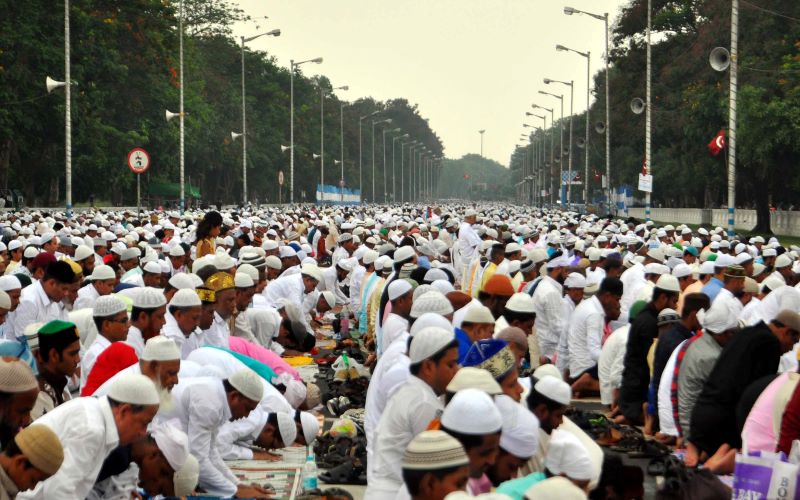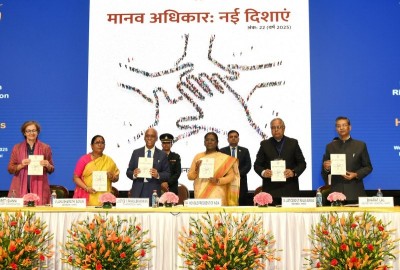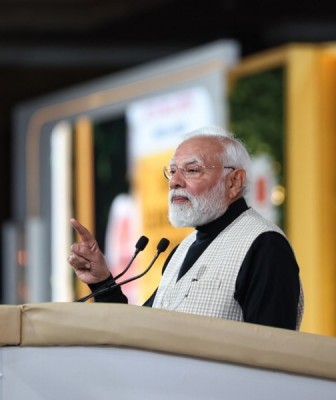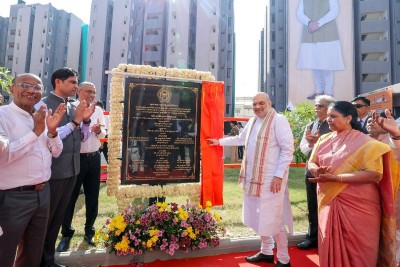 Muslims
Muslims
The multi-sectoral development program of the Union Ministry of Minority Affairs is changing the destiny of Muslims
Conditions are changing in 90 districts of India because of the developmental plans in the minority-majority districts.
These 90 districts were classified as MCD in 2008. It is a regional developmental initiative to remove the developmental deficiencies of minority concentrated areas by building and developing social infrastructure and providing basic amenities.
Muslims, Sikhs, Christians, Buddhists, Parsis and Jains have been identified as minority communities under section 2 (c) of the National Commission for Minority Act,1992. The actual name of this scheme is 'Multi-Sectoral Development Program for Minorities'.
The scheme is overseen by the Union Ministry of Minority Affairs, Government of India.
The significance of this scheme in the context of Muslims is heightened because of the high poverty rate among Indian Muslims.
While 53% of Dalit men have jobs, however merely 48% of Muslims have jobs. Similarly, 23% of Dalit women are employed while the percentage of Muslim women is only 9.6%.
According to the 2001 census, the literacy rate of the country is 64.80% while among Muslims it is only 59.10%.
Muslims are also becoming more ill on average because only 19% of their homes have plumbing for clean drinking water.
Now that the situation is extremely serious, it is clear that the Government of India will also work to improve their situation.
Today, the multi-sectoral development program has completed 14 years and is beginning to show good consequences in lots of districts.90 districts identified under the Multisectoral Development Program, most are in Uttar Pradesh.
In this plan, 21 districts have been identified here. Assam 13, West Bengal 12, Bihar and Arunachal Pradesh 7-7, Manipur 6, Jharkhand and Maharashtra 4-4, Haryana, Uttarakhand, Karnataka and Mizoram 2-2, Delhi, Meghalaya, Andaman and Nicobar, Orissa 1-1 Districts.
The scheme covers Madhya Pradesh, Kerala, Sikkim and Ladakh. Along with this, 338 towns and 1228 blocks of class 1 are also listed in this scheme.
The basis of the scheme is that the minority population in the district or town should be 25% or more.
The advantage of going to town and block level is that many states are not included in the district list but their minority areas have been included at town and block level.
For example, Punjab and Rajasthan are not in the national list of 90 districts but 26 towns of Punjab and 16 towns of Rajasthan are covered on the basis of town list.
But this does not mean that the towns or blocks of the districts of the states which are included in it have been left out. For example, Uttar Pradesh has the highest number of 21 districts covered under the MCD scheme, while Uttar Pradesh has 71 additional towns under the scheme in addition to these 21 districts.
It aims to provide better infrastructure for education, skills development, health, sanitation, shelter, roads and drinking water, and to create income opportunities for minorities. This is due to the joint efforts of the Center and the States.
The scheme also seeks to fill the gaps in the existing schemes of the government by providing additional resources and also undertakes new minority welfare projects so that the development gap created during this period can be filled up expeditiously.
In 2017, the Indian Institute of Public Administration presented a detailed report on the MCD scheme. Chapter 4 of the report states that “these items appear to be related to three main areas: education, health and drinking water. Given the improved quantity or duration of water supply for better access to healthcare facilities or access to secondary school in this case, the recorded data confirms the impact of MSDP on their daily life.
This may sound ridiculous, even trivial to some, but we see very little satisfaction on the faces of those who felt basically isolated from being ignored for so long. It is true that not everyone has benefited, but with these small actions, MSDP has been able to stem the tide of frustration in the minds of a large segment of the population in minority areas. "
It would appear that these items are essentially related to three sectors: education, health and drinking water.
Staring from improvement in volume or duration of water supply to improved access to health care facilities or access to secondary school for that matter, the recorded data confirms impact of MsDP on their day-to-day life. It may sound mundane, even trivial to some but we noticed little satisfaction on the faces of the people who were until necessarily feeling alienated because of prolonged neglect.
True, everybody has not reaped benefits but with these small gestures, MsDP has been able to arrest the drift from the psyche of a sizeable section of people in minority populated areas.)
Muslims have three needs. Education, employment and health. In the budget for the year 2022-23, Rs. 50.50 crore has been allocated to the Ministry of Minority Welfare. This is Rs 674 crore more than the previous budget.
Obviously, it also aims at the development of minority-populated areas. Minority Welfare Minister Mukhtar Abbas Naqvi described the budget as promoting confidence and development amid the Corona epidemic.
If full dedication and purposeful social workers in all 90 selected districts do with hard work, these districts can become an example for the Muslims of India. It is hoped that with the light of 90 districts, minorities across India will be able to shed light on their development.
(The author is a freelance Journalist and chairman of the Muslim Students' Organization of India)
Support Our Journalism
We cannot do without you.. your contribution supports unbiased journalism
IBNS is not driven by any ism- not wokeism, not racism, not skewed secularism, not hyper right-wing or left liberal ideals, nor by any hardline religious beliefs or hyper nationalism. We want to serve you good old objective news, as they are. We do not judge or preach. We let people decide for themselves. We only try to present factual and well-sourced news.







